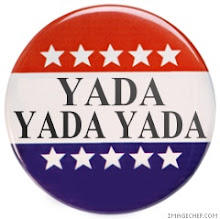I love a good laugh in the morning, don't you? Especially on a gloomy and rainy one. Looking at CNN.com today the story of a "signed original Salvador Dali" showing up at Goodwill Industries not only made the sun emerge, but their golly-gee-whiz glee almost had me spitting coffee on the keyboard. Somewhere the ghost of P.T. Barnum is sharing the mirth. An art business truism is "never buy because of a signature." Doubly true for a Dali' print.
Look, the term original Dali' is a joke in the Art community because the term fake Dali' is considered a tautology. There are so many fakes, most experts consider any Dali to be bogus unless proven otherwise - and maybe proven again. Oh but it's signed, one hears. Sidesplitting, really. Dali' was discovered back in the 80's signing thousands and thousands of blank pieces of paper and selling them to forgers who got rich selling them to the gullible as 'original' Dali' work. Indeed sculpture made from drawings or paintings by Dali' are sold as "original" even though the artist never saw them and may have died before they were cast -- and yet some accept them as being "original Dali'" To me, the Dali' market is a bit like a mirrored carnival fun house. What you see may or may not be what you get and original is damned hard to define. Many people, some people I know, went to jail for Dali' scams and hearing "Original Dali' print" still makes any dealer or collector active in the late 20th century smile - or wince as the case may be. OK, I admit to having one hanging here in my office as a reminder or the roaring 80's, but I bought it knowingly because I was madly in love with the dealer. Money well spent, but that's another story.
Look -- an etching, a wood block, a stone lithograph or even a silk screen may be original, but a number of copies are made, sometimes by the artist himself, sometimes with a professional to do the final printing. A photo-reproduction done with the artist's approval and cooperation is less original even if part of a limited edition, but faking a print with today's technology is easy enough even without the cooperation of someone like Dali'. Caveat Emptor and please don't confuse a limited edition print, as CNN is breathlessly doing today, with some $20,000,000 painting from the 1940's that Sotheby's or Christie's may offer from time to time. You can afford a Rembrandt etching, you can't afford a Rembrandt painting.
Dali's were printed like overpriced wallpaper back during the art boom of the 1980's along with fake Miro's, Picasso's and Chagall's that the hyperventilating public hoped to get rich on -- and didn't. A 1992 expose' by Lee Caterall The Great Dali' Art Fraud helped to deflate the Dali' madness for a time, but this is America -- who reads? Time and gullibility march on and Iron Pyrites isn't called fools gold for no reason.
Much of the public is still unaware of the fake art industry, although the business all but collapsed in 1989 with the general collapse of the art bubble. I hear there was a resurgence of Dalimania when peddlers began to clear out storage lockers and put the stuff back on the market in 2007. Scams seem to go in cycles. They burn out but recur periodically as Mr. Barnum told us, when a new generation of suckers enters the market. They never go away, sad to say and Fine Art fraud will always be with us. Even the experts get fooled. Scammers can and often do take a photo-reproduction - a poster and forge a signature and edition number on it. A few weeks ago I got all excited about a "signed" Wilfredo Lam painting -- a really beautiful one offered by a dealer in Peru, but thinking it through and carefully comparing the signature with a few in my collection, I decided it was a fake from the wicked 80's. Some other bargain hunter got burned, or perhaps turned it around and flipped it to some parvenu. Caveat Emptor and if it's too good to be true. . . it is.
So I wouldn't be surprised if many Dali' prints showed up - Miro, Picasso, Matisse are all common even fake Dali' with legitimate signatures, in charity shops. Although I'm too lazy to look it up in a catalog raisonne' I think think the Goodwill item is as real as any Dali' from his declining years. I doubt it could be worth nearly the $12,705 it's going for at their auction website, this Saturday morning. It's from 1979, late in the artist's life when he was recycling bits of images from his iconic paintings from the 1930's and 40's. I can buy a Cycles of Life retail from a legitimate dealer I know for under $10k, but who knows? Art is only worth what someone is willing to pay, but that truism obtains when they go to resell it as well. Did I say Caveat Emptor?
Saturday, November 17, 2012
Subscribe to:
Post Comments (Atom)


No comments:
Post a Comment